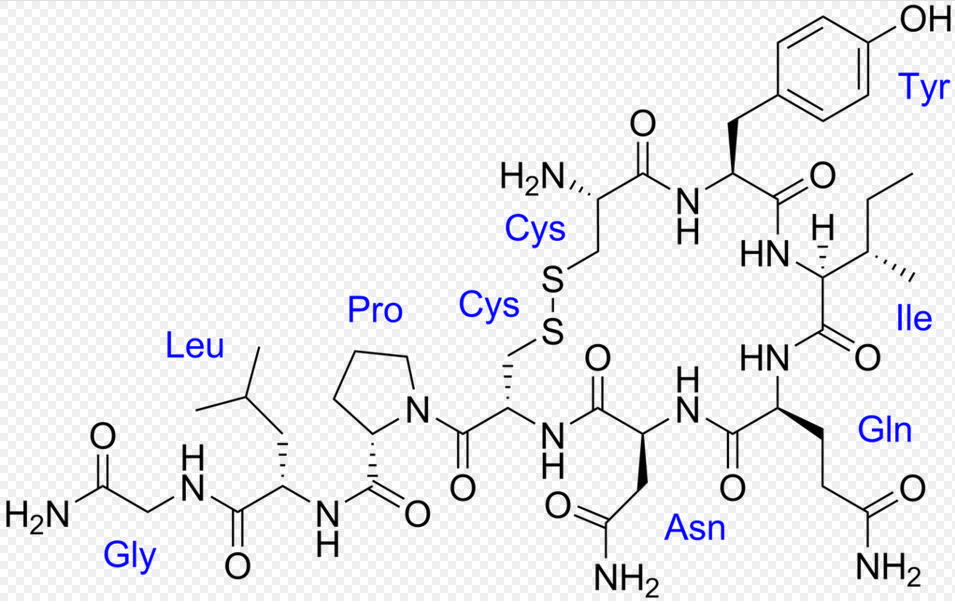OXYTOCIN :- The Love/Cuddle Chemical
Hi guys! I’m here again with another post as we continue on our Quest to find out how science and love are integrated as we try to understand the term Love from a scientific aspect. You can check out the first post on this scientific Quest.
Thanks to the biology of our brains, we can actually practice love!. Hormones and Neurotransmitters regulate our feelings and we can actually affect how they are released. The idea that we have the power to influence such a complex process like feelings of attachment or bonding by regulating our psychobiology is absolutely fascinating. Isn’t it?
Oxytocin happens to be the centre of attraction for scientists. It can be administered as a nasal spray, but our body produces it naturally in the brain. The neuro-hormone helps to create the feeling we call Love. Hence, it is also referred to as the “CUDDLE CHEMICAL”. It carries its biochemical message throughout the body via the blood vessels, priming the body for tenderness, affection and trust.

Oxytocin was discovered in 1906 as the hormone that triggers labor in women about to give birth. Later on, scientist discovered that it was also involved in lactation. Nowadays, we know that Oxytocin also plays a role in maternal bond and in the care taking behaviors seen in parents.
Scientists say Oxytocin regulates our social interactions and hence is important in the survival of the human species. It is not found in humans only, as it has been isolated from other social animals such as ants, rats and even worms!
The study of Oxytocin in humans however, is a difficult task as it is not easy to know what is happening the brain of humans. And to actually understand the physiological role of Oxytocin, Models are needed (most preferably rats). In a recent study on rats, researchers controlled the release of Oxytocin and observed considerable effects on the social behavior of the animals. Rats that were stimulated with Oxytocin became more social as they interacted with other rats more (by sniffing, stroking, cuddling).
Even with these models, researchers still know little about what triggers the release of Oxytocin, but one thing that has been proven to be certain is that without this hormone, rats would be less social, and we humans would not fall in love!.
Infatuation can be described as a biochemical explosion of oxytocin which literally sends both lovers hearts racing! This is because the heart is particularly susceptible to its effects. Recent studies show that the heart can even produce the CUDDLE HORMONE itself!
But then, Love creates even greater chaos in the brain as it flicks so many biochemical switches, such that acute infatuation actually resembles a psychotic disorder! Truly, when it comes to our brain, Crazy and Love are actually not farfetched from each other.
We take a pause here and continue the scientific exploration on love in another episode that will be published soon. A big shout-out to everyone who showed support on my previous post! You guys have given me the morale needed to keep this going. Thanks for reading through!
REFERENCES
1- Oxytocin Modulates the Cognitive Appraisal of the Own and Others Close Intimate Relationships
3- Oxytocin


Thanks for your contribution to the STEMsocial community. Feel free to join us on discord to get to know the rest of us!
Please consider supporting our funding proposal, approving our witness (@stem.witness) or delegating to the @stemsocial account (for some ROI).
Please consider using the STEMsocial app app and including @stemsocial as a beneficiary to get a stronger support.
Congratulations @mengene! You have completed the following achievement on the Hive blockchain and have been rewarded with new badge(s) :
You can view your badges on your board And compare to others on the Ranking
If you no longer want to receive notifications, reply to this comment with the word
STOPDo not miss the last post from @hivebuzz:
Support the HiveBuzz project. Vote for our proposal!